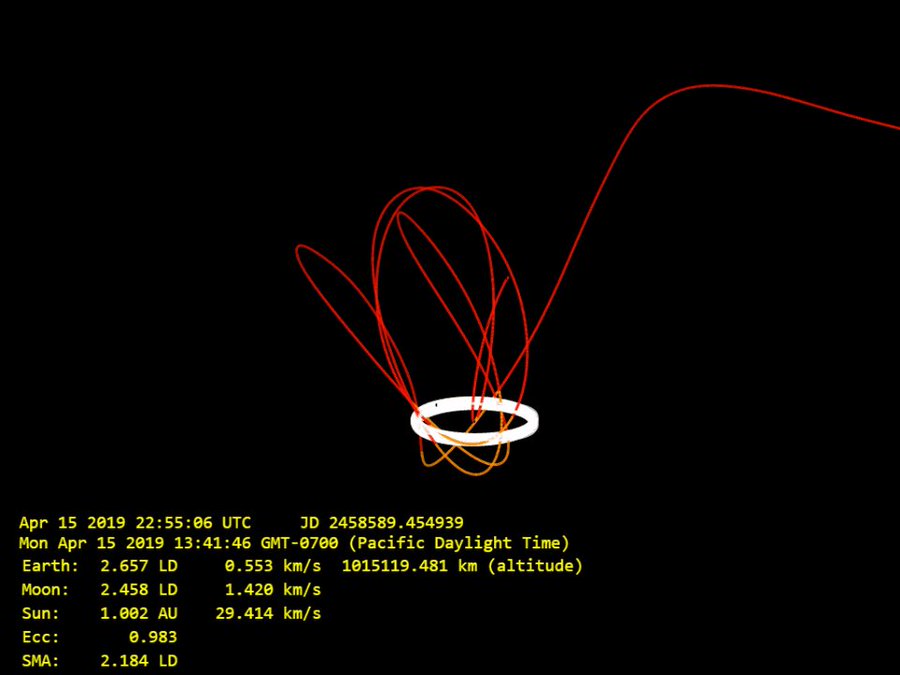Updated
Astronomers say the Earth has drawn in a tiny asteroid and temporarily pulled it into orbit, in a phenomenon that has only been recorded once before.
Key points:
- The object was discovered by two astronomers working on a NASA-funded project in Arizona
- The asteroid's orbit indicates it is temporarily bound to the earth, prompting some astronomers to label it a 'mini-moon'
- It was officially announced by the International Astronomical Union's Minor Planet Centre and named 2020 CD3
The asteroid, which has been named 2020 CD3, is called a "mini-moon" by some astronomers because it has been captured by Earth's gravitational pull.
The International Astronomical Union's Minor Planet Centre (MPC) said the object was a "temporarily captured object" (TCO).
It takes 377.8 days to complete each orbit.
"Orbit integrations indicate that this object is temporarily bound to the Earth," an MPC circular announcing the asteroid read.
"No evidence of perturbations due to solar radiation pressure is seen, and no link to a known artificial object has been found.
"Further observations and dynamical studies are strongly encouraged."
The object was discovered by Kacper Wierzchos and Theodore Pruyne, researchers at the Catalina Sky Survey (CSS), funded by NASA.
The astronomers had been using a 1.52-metre telescope at the Mount Lemmon Observatory near Tucson, Arizona on February 15.
The CSS helps NASA track near-Earth objects that could be potentially hazardous to the planet.
BIG NEWS (thread 1/3). Earth has a new temporarily captured object/Possible mini-moon called 2020 CD3. On the night of Feb. 15, my Catalina Sky Survey teammate Teddy Pruyne and I found a 20th magnitude object. Here are the discovery images.

Forecasts say 2020 CD3 will stick around until April 2020
Mr Wierzchos said the chunk of carbonaceous rock was relatively small, with a diameter between 1.9-3.5m, and had been in earth's orbit for three years."But it's a big deal as out of [approximately] 1 million known asteroids, this is just the second asteroid known to orbit Earth," he said.
"The object has just been announced by the MPC and its orbit shows that it entered Earth's orbit some three years ago."

Here's an animated GIF of our new mini-moon 2020 CD3, discovered by @WierzchosKacper. Rotating frame keeps the Earth/Sun line stationary. Orbital elements courtesy of IUA MPEC. https://minorplanetcenter.net/mpec/K20/K20DA4.html …http://orbitsimulator.com/gravitySimulatorCloud/simulations/1582674492776_2020cd3_mpec.html …

An orbit simulator based off MPC data showed the object orbiting Earth in unstable patterns and eventually being pushed back out into space by April 2020.
While asteroids pass Earth frequently, it is rare for them to be drawn into the Earth's gravity and remain in orbit for an extended period of time.
Most space rocks are either drawn into the Earth's atmosphere and burn up upon entry, or partially orbit the Earth before their velocity carries them elsewhere.
In 2006, the first TCO, asteroid 2006 RH120, was also discovered by the CSS and lingered in Earth's orbit for a year before being hurled back out to space in 2007.


No comments:
Post a Comment